.
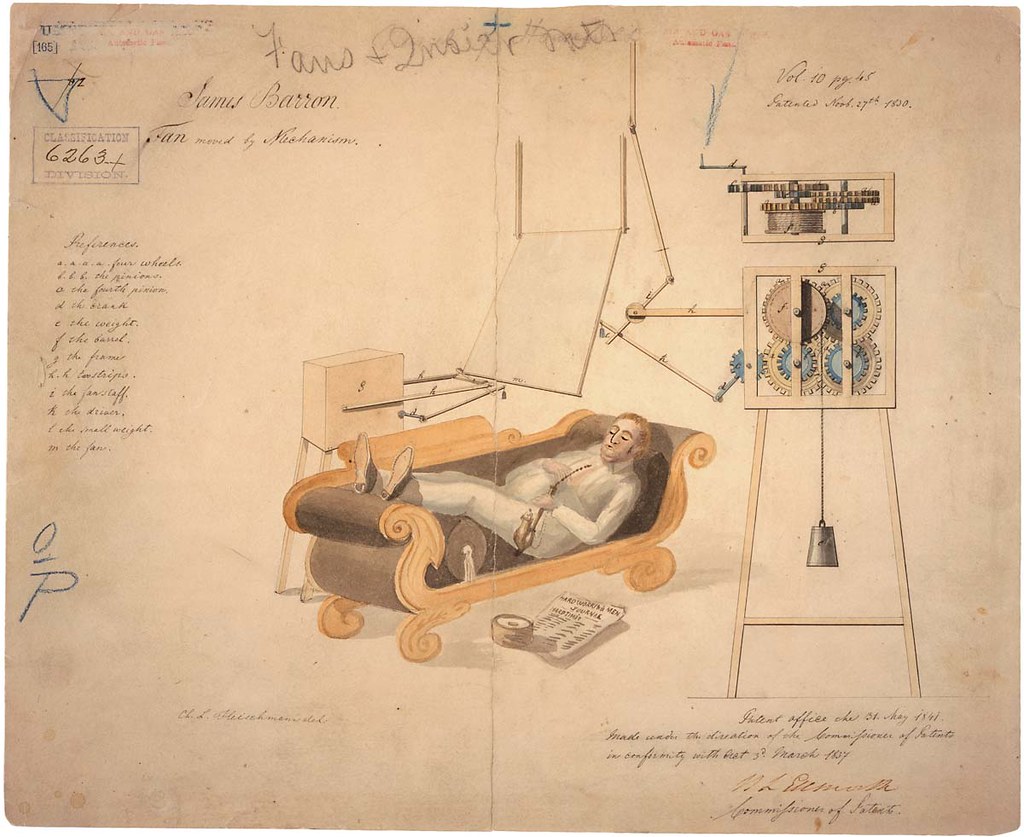
Drawing of Fan Moved by Mechanism: Department of State, Patent Office, 27 November 1830 (Cartographic and Architectural Records Section, US National Archives)
Not excepting even the credulous Kraus (see his De Selby's Leben), all the commentators
have treated de Selby's disquisitions on night and sleep with considerable reserve.
This is hardly to be wondered at since he held (a) that darkness was simply an accretion of
'black air', i.e., a staining of the atmosphere due to volcanic eruptions too fine to be seen
with the naked eye and also to certain 'regrettable' industrial activities involving coal-tar
by-products and vegetable dyes; and (b) that sleep was simply a succession of fainting-fits
brought on by semi-asphyxiation due to (a). Hatchjaw brings forward his rather facile and
ever-ready theory of forgery, pointing to certain unfamiliar syntactical constructions in the
first part of the third so called 'prosecanto' in Golden Hours. He does not, however, suggest
that there is anything spurious in de Selby's equally damaging rhodomontade in the Layman's
Atlas where he inveighs savagely against 'the insanitary conditions prevailing everywhere
after six o'clock' and makes the famous gaffe that death is merely 'the collapse of the
heart from the strain of a lifetime of fits and fainting'. Bassett (in Lux Mundi) has
gone to considerable pains to establish the date of these passages and shows that de Selby
was hors de combat from his long-standing gall-bladder disorders at least immediately
before the passages were composed. One cannot lightly set aside Bassett's formidable
table of dates and his corroborative extracts from contemporary newspapers which treat
of an unnamed 'elderly man' being assisted into private houses after having fits in the street.
For those who wish to hold the balance for themselves, Henderson's Hatchjaw and Bassett is not
unuseful. Kraus, usually unscientific and unreliable, is worth reading on this point. (Leben,
pp. 17-37.)
As in many other of de Selby's concepts, it is difficult to get to grips
with his process of
reasoning or to refute his curious conclusions. The 'volcanic
eruptions', which we may for convenience compare to the infra-visual
activity of such
substances as radium, take place usually in the 'evening' are stimulated
by the smoke
and industrial combustions of the 'day' and are intensified in certain
places which may,
for the want of a better term, be called 'dark places'. One difficulty
is precisely this
question of terms. A 'dark place' is dark merely because it is a place
where darkness
'germinates' and 'evening' is a time of twilight merely because the
'day' deteriorates
owing to the stimulating effect of smuts on the volcanic processes. De
Selby makes no
attempt to explain why a 'dark place' such as a cellar need be dark and
does not define
the atmospheric, physical or mineral conditions which must prevail
uniformly in all such
places if the theory is to stand. The 'only straw offered', to use
Bassett's wry phrase,
is the statement that 'black air' is highly combustible, enormous masses
of it being
instantly consumed by the smallest flame, even an electrical luminance
isolated in a vacuum.
'This,' Bassett observes, 'seems to be an attempt to protect the theory
from the shock it
can be dealt by simply striking matches and may be taken as the final
proof that the great
brain was out of gear.'
A significant feature of the matter is the absence of any authoritative record of those
experiments with which de Selby always sought to support his ideas. It is true that
Kraus (see below) gives a forty-page account of certain experiments, mostly concerned with
attempts to bottle quantities of 'night' and endless sessions in locked and shuttered bedrooms
from which bursts of loud hammering could be heard. He explains that the bottling operations
were carried out with bottles which were, 'for obvious reasons', made of black glass. Opaque
porcelain jars are also stated to have been used, 'with some success'. To use the frigid words
of Bassett, such information, it is to be feared, makes little contribution to serious deselbiana (sic).'
Very little is known of Kraus or his life. A brief biographical note appears in the obsolete
Bibliographie de de Selby. He is stated to have been born in Ahrensburg, near Hamburg, and
to have worked as a young man in the office of his father, who had extensive jam interests in
North Germany. He is said to have disappeared completely from human ken after Hatchjaw had
been arrested in a Sheephaven hotel following the unmasking of the de Selby letter scandal
by The Times, which made scathing references to Kraus's 'discreditable' machinations in
Hamburg and clearly suggested his complicity. If it is remembered that these events
occurred in the fateful June when the County Album was beginning to appear in fortnightly
parts, the significance of the whole affair becomes apparent. The subsequent exoneration
of Hatchjaw served only to throw further suspicion on the shadowy Kraus.
Recent research has not thrown much light on Kraus's identity or his ultimate fate.
Bassett's posthumous Recollections contains the interesting suggestion that Kraus did not exist at all,
the name being one of the pseudonyms adopted by the egregious du Garbandier to further his
'campaign of calumny'. The Leben, however, seems too friendly In tone to encourage such a
speculation.
Du Garbandier himself, possibly pretending to confuse the characteristics of the English
and French languages, persistently uses 'black hair' for 'black air', and makes extremely
elaborate fun of the raven-headed lady of the skies who deluged the world with her tresses
every night when retiring.
The wisest course on this question is probably that taken by the little known Swiss writer,
Le Clerque. 'This matter,' he says, 'is outside the true province of the conscientious
commentator inasmuch as being unable to say aught that is charitable or useful, he must
preserve silence.'
Flann O'Brien (Brian O'Nolan) (1911-1966): Chapter VIII, Footnote 1, from The Third Policeman (1939-40), 1967
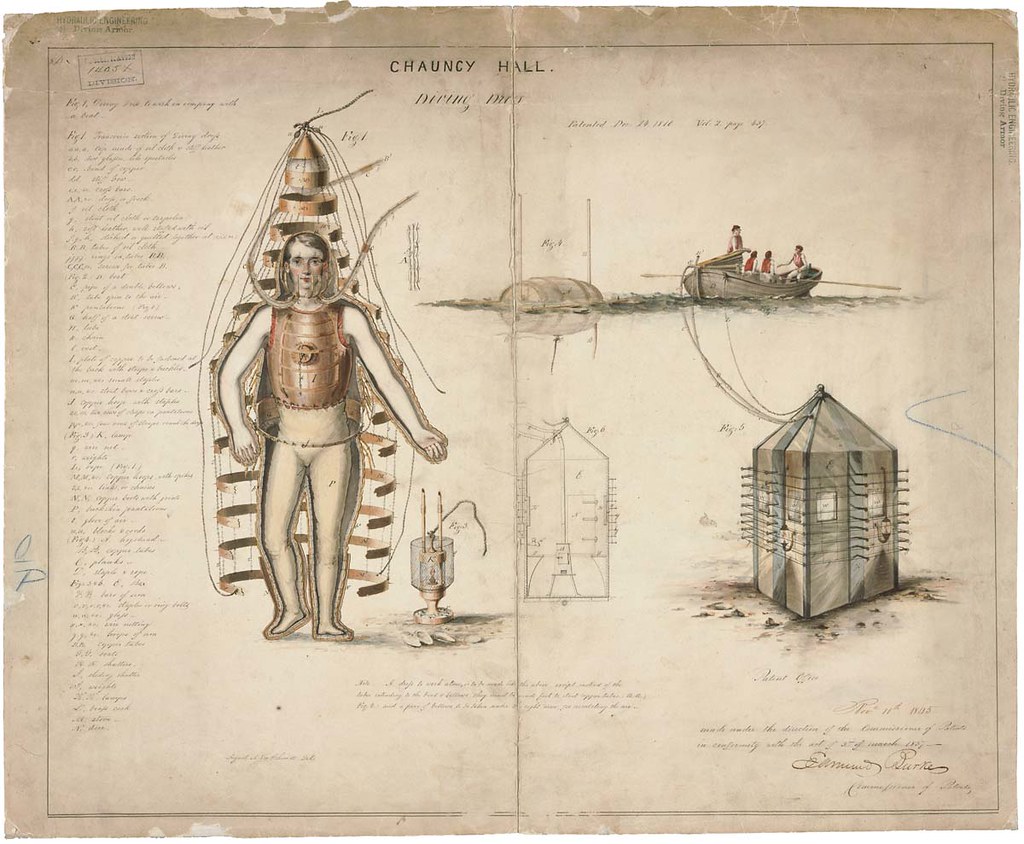
Drawing of Diving Dress: Department of State, Patent Office, 24 December 1810 (Cartographic and Architectural Records Section, US National Archive
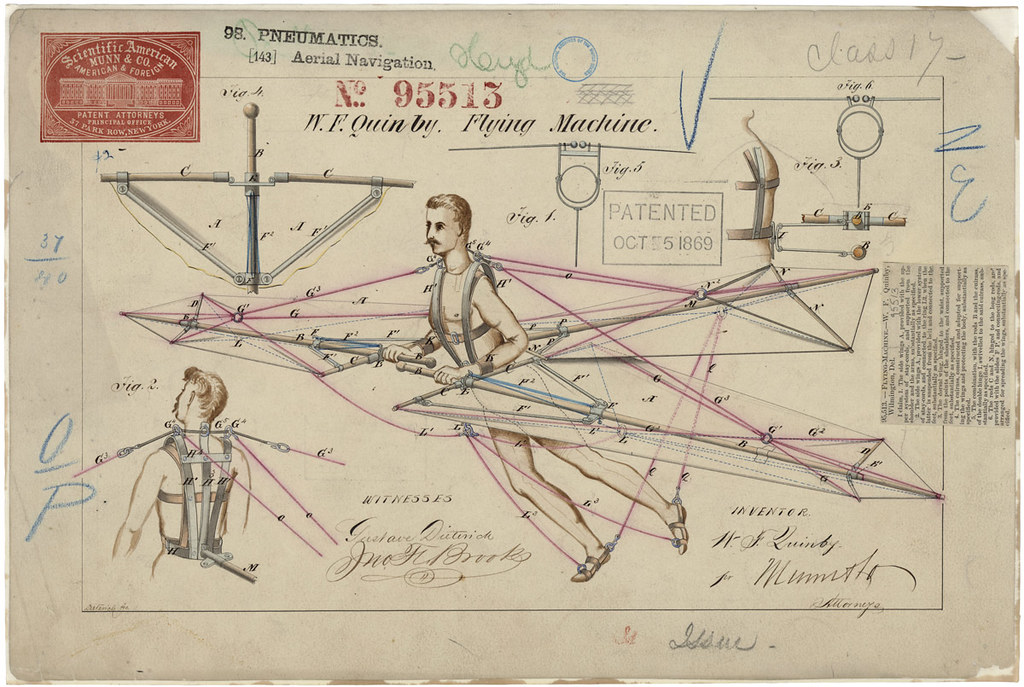
Patent Drawing for a Flying Machine: Department of Commerce, Patent Office, 5 October 1869 (Textual Archives Services Division, US National Archives)
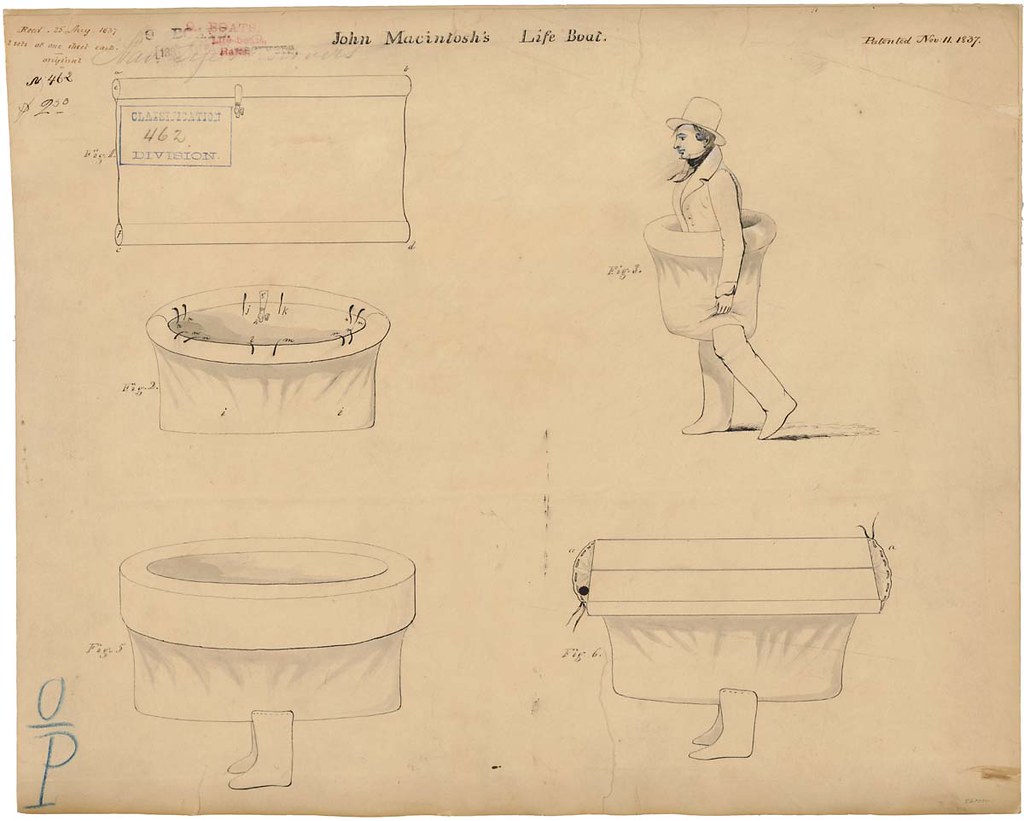
Drawing of a Life Boat: Department of the Interior. Patent Office, 11 November 1837 Cartographic and Architectural Records Section, US National Archives)

Drawing of Creeping Baby Doll: Department of the Interior, Patent Office, 14 March 1871 (Cartographic and Architectural Records Section, US National Archives)
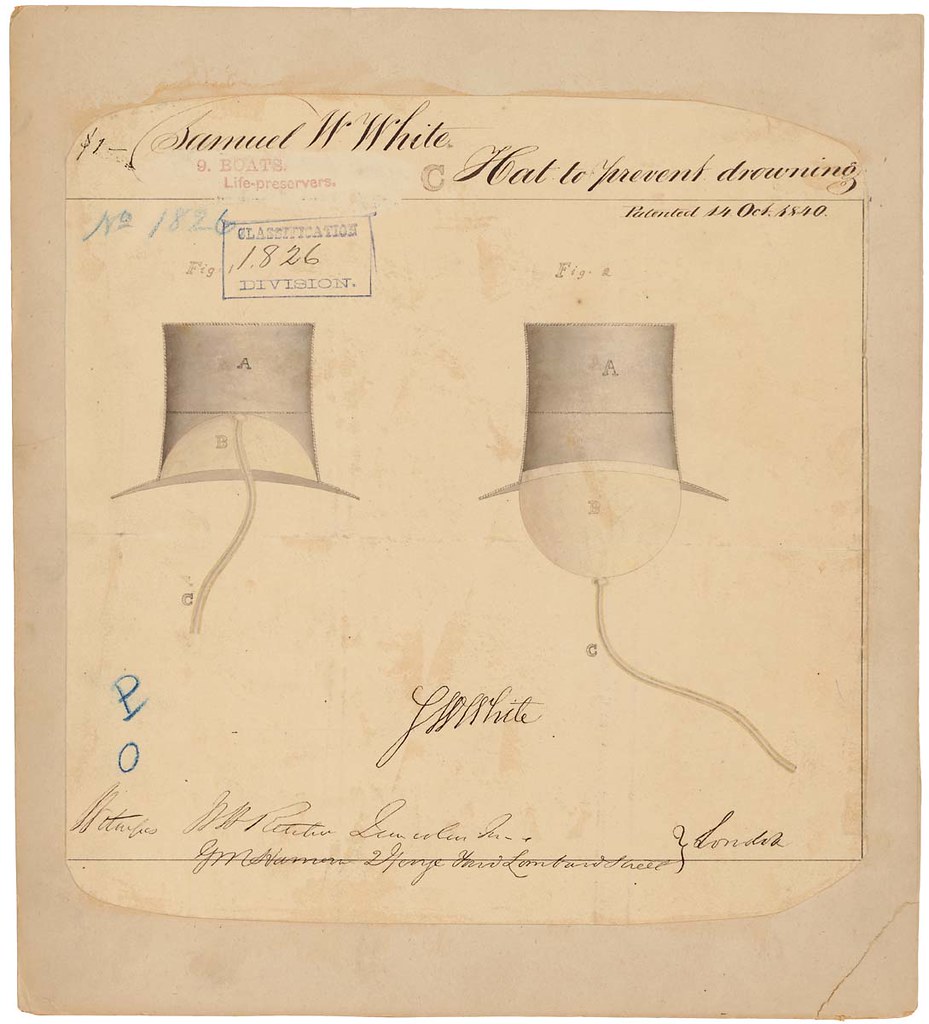
Drawing of Hat to Prevent Drowning: Department of the Interior, Patent Office, 14 October 1840 (Cartographic and Architectural Records Section, US National Archives)
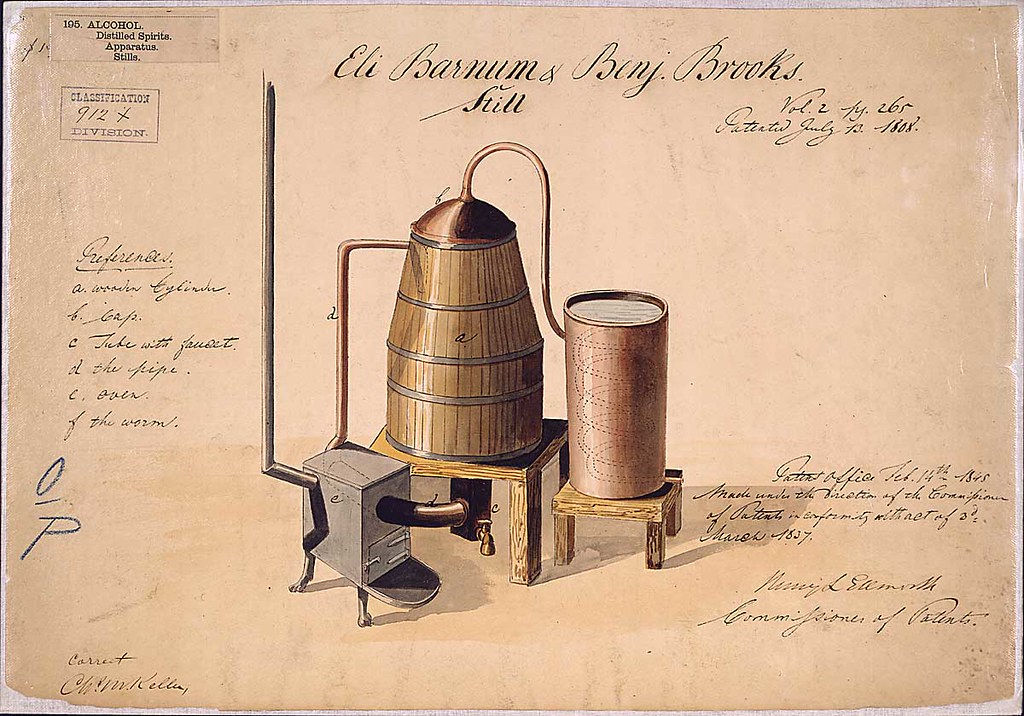
Still Design Patent: Department of State, Patent Office, 1808 (Cartographic and Architectural Records Section, US National Archives)
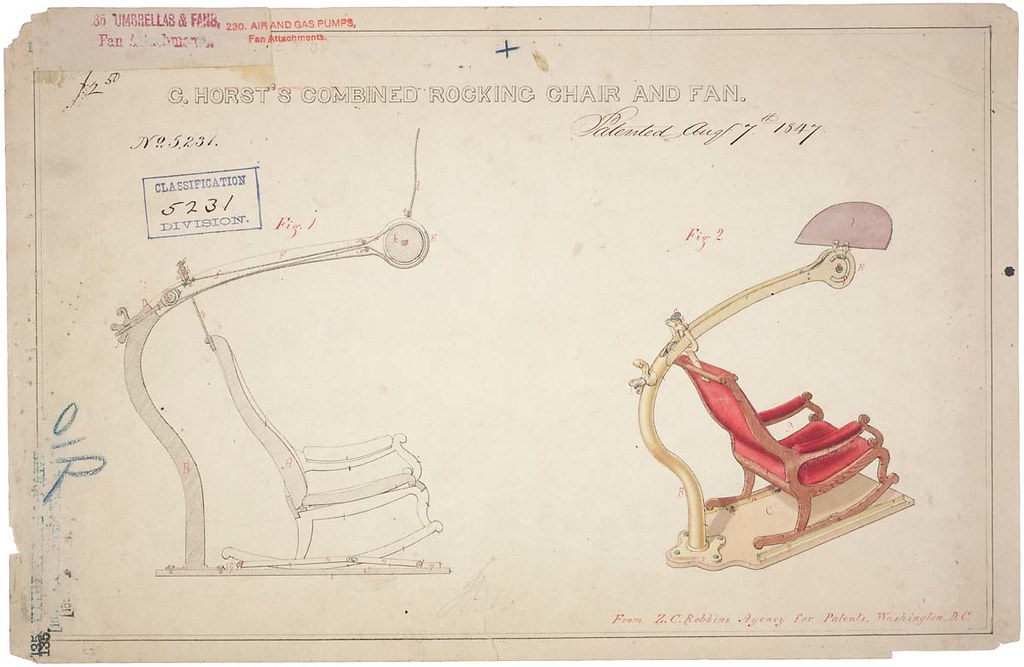
Drawing of Rocking Chair and Fan: Department of the Interior, Patent Office, 7 August 1847 (Cartographic and Architectural Records Section, US National Archives)



8 comments:
Is it about a bicycle? The story of Brian O'Nolan.
Tom, These wonderful illustrations are certainly in the spirit of Flann O'Brien and the Research Bureau he frequently cited in his columns. I'd love someday to be referred to as "usually unscientific and unreliable, is worth reading on this point." Cheers,
David
Thanks, Tom, for a look at the lighter side of the dark side. Always did like Flann O’Brien. Damned funny, those drawings of various absurd machines (a top hat as flotation device—the original air head!), and O’Brien’s narrative about the men who could very well be their dotty makers, who seem to have a rather tenuous grip on what’s referred to in the trades as “reality”.
Human beings ha ha ha.
This "night" business, isn't it down to the dimmer switches Madame Blavatsky had fitted in our heads?
"You'd have to look at him twice to make sure that he was there". A very useful quality for a writer.
Tom,
A stained atmosphere is what i'd like to believe they are trying to blow away,sitting in those rocking chairs..Mimes to follow??..i'd really like to see how they go about rubbing shoulders,unintendedly..
As for now i'm engrossed in these sketches..and i think i do need a hat.
Many thanks friends for seconding my absurd notion that the triumphant and exquisite folly of human ingenuity at its most inventive (see patent illustrations) finds its fictional correlative in the writings of this author. What else is there to say about Brian O'Nolan and his wonderfully funny deconstructions of the suffocating cultural straitjacket (see: video link) from which he imaginatively emerged... but in the end never could escape.
Not that escape is any solution.
Not that not escaping is any solution (see Manik's link).
The manuscript of this book was turned down by a publisher when submitted shortly after being writ, then reported by O'Nolan/O'Brien to have been lost, though indeed it sat visible to all in his chambers for some twenty-six years until his death.
It was published posthumously by his widow.
The sentence writing. Lost art.
A bit more gloomy than usual here beyond the pale ever since the eyeball bleeding got well underway late last week so I was as surprised as the sleepy cat next to me when I broke out laughing aloud on this one:
"Du Garbandier himself, possibly pretending to confuse the characteristics of the English and French languages, persistently uses 'black hair' for 'black air', and makes extremely elaborate fun of the raven-headed lady of the skies who deluged the world with her tresses every night when retiring."
Sentences like that are no longer available at the factory outlet.
(By the by, Duncan's comment re. Madame B stuck in my craw to the extent of causing me to imagine her experimenting -- late one evening, deselbyesquely as it were -- with each of these inventions, in turn. Considered as so induced, her writings come to seem a bit more... I wouldn't want to say intelligible, quite, but... properly symptomatic?)
Ok, by the almost dawn's early not quite light, the bombs of recovered memory are bursting in the bloody-eyeball air head of the Irishman who chopped down the cherry tree. No, wait, wrong recovered memory. Upon arising the genius of the house puts me in mind of the fact that 'twas she, not I, who came up with the cunning plan of matching these illustrations, which I had found some time ago and which were ticking away all these years like the b--b (daren't say that word) in the briefcase of the character in The Secret Agent. The novel by that other Irish novelist, I mean. That is, the Polish one. Well, no, that's not quite the truth, either. I had been discussing The Third Policeman with a buck naked emeritus professor of forensic psychology, when... er, long story. The genius of the house conveniently then ordered and fetched the novel from the local branch of the town lending library. From there things began to fall into place directly. (See: "Leben", p. 61 et seq.)
Post a Comment